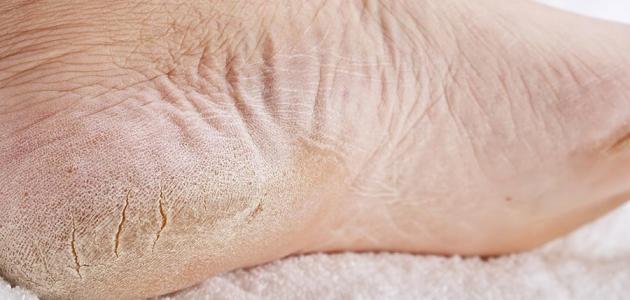Contents
Wheat allergy
Wheat allergy disease is also known as Celiac disease, and wheat allergy disease is associated with an abnormal response in the immune system when eating gluten, a protein found in wheat, rye, and barley, and over time, this immune response causes harm. In the lining of the small intestine, and this limits the body's ability to absorb some nutrients from food, and it is mentioned that wheat allergy disease does not have a completely cure, but a strict gluten-free diet may help overcome symptoms and promote healing Intestine. [1]
Symptoms of wheat allergy
Symptoms of wheat allergy in children
Children with this condition exhibit a group of symptoms, including the following: [2]
- Irritability and fatigue.
- Delayed puberty, and the affected child may appear smaller than normal.
- Weight loss .
- Feeling sick, stomach pain and bloating .
- Suffering from constipation or diarrhea continuously.
- Stool is pale and greasy , in addition to the emission of a foul odor.
Symptoms of wheat allergy in adults
Several symptoms appear when adults have this condition, and they include disturbances in many parts of the body, including the following: [2]
- Seizures or seizures.
- Infertility and miscarriage.
- Weakened and brittle bones .
- Feeling fatigued and tired.
- The emergence of diseases and skin problems.
- Menstrual disorder and irregularity.
- Iron deficiency anemia.
- Sores appearing inside the mouth.
- Feeling of joint pain and stiffness.
- Tooth discoloration, loss of enamel.
- Feeling of numbness and tingling in the hands and feet.
- Dermatitis herpetiformis, as this condition appears in 15-25% of wheat allergy patients , and these patients often do not have symptoms of the digestive system.
It should be noted that some people who suffer from wheat allergy do not have any symptoms, yet they may have long-term complications as a result of their disease, and the severity of symptoms varies from one person to another depending on several factors, including; The length of time a person breastfeds when he was a young child, the age at which the person started consuming gluten, the amount of gluten he eats in his daily life, in addition to the severity of the damage the lining of his intestine has suffered. [2]
Wheat allergy risk factors
In fact, the causes of disease development are still unclear, but there are many risk factors associated with an increased risk of developing this disease, including the following: [3]
- Family history: As the infection of a first-degree relative with wheat allergy disease increases the likelihood of contracting it, and according to statistics, having a family history of the disease poses a 10% risk for the individual to contract it, and if there are identical twins and one of them suffers from this disease, this will increase The risk of infecting the other is 75%. As for the explanation of this situation, research indicated the presence of genetic mutations in a group of genes called HLA-DQ genes responsible for developing the immune system, and these mutations may be transmitted through the same family.
- Infection with some diseases: As the incidence of some diseases increases the possibility of contracting wheat allergy, including the following: [3]
- Thyroid diseases.
- Type 1 diabetes.
- Turner syndrome.
- Down syndrome .
- Ulcerative colitis.
- Neurological disorders that affect the brain and nervous system, such as epilepsy .
- Other factors: There are many conditions and behaviors that increase the likelihood of developing wheat allergy, including a person having an infection in the digestive system during early childhood, or introducing gluten to the child's diet before reaching the third month of age.
Diagnosis of wheat allergy
Most people with wheat allergy are unaware of their affliction with this condition, and according to studies, only 20% of those infected get a suitable diagnosis for this condition, and it is mentioned that the symptoms that appear on the patient are different and varied, and therefore a person may suffer from the disease for several years before being diagnosed, and during that Duration The intestine is slowly and continuously damaged, and a set of tests are used to diagnose the disease, including the following: [4]
- Serological: Tests , to detect some of the disease antibodies.
- Genetic tests: are used to detect the human leukocyte antigen, in order to rule out wheat allergy disease.
- Gastrointestinal endoscopy: This examination is performed if previous blood tests indicated the possibility of a person having this disease , and through this procedure the doctor can examine the patient's small intestine and take a sample of its tissues, with the aim of detecting the damage. And its amount.
Treating wheat allergy
There are many treatments that are resorted to to alleviate the symptoms of wheat allergy, and the following are some of them: [5]
- Drug treatments: In fact, drugs are not prescribed in all cases, but rather in certain cases, as in the case of dermatitis herpetiformis, as drugs are prescribed in this case so that they are taken on a short term to relieve the rash, such as the drug Dapsone (in English: Dapsone and Sulfapyridine.
- Diet: Care must be taken to adhere to a strict gluten-free diet for life, in which it is permitted to consume food and drinks whose gluten content is less than 20 parts per million, as following this diet contributes to the healing of the small intestine , thus reducing the severity of symptoms In addition to reducing the possibility of complications in the future.
- Vitamins and nutritional supplements: Wheat allergy sufferers suffer from a deficiency of many nutrients, including fiber, calcium, iron, magnesium, folic acid , copper, zinc, vitamin D, vitamin B2, vitamin B3, vitamin B6, and vitamin B12, and after Following the gluten-free diet, most of the sufferers improve their condition, their small intestine recovers , and their ability to naturally absorb nutrients again, however, deficiency of some vitamins may persist in some patients, such as vitamins of group (B); Because a gluten-free diet may not provide it sufficiently, this problem can be solved by taking gluten-free nutritional supplements, which contain multivitamins that suit the individual's daily need. [5]
- Bone health: The bone density test is performed at the time of diagnosis for adults to ensure that they do not have osteoporosis , and this test is also performed for children and adolescents who suffer from acute malabsorption, or for people who have been diagnosed with this condition for a long time, or who have symptoms of bone disease Or those who do not adhere to a gluten-free diet, and the doctor prescribes the necessary nutritional supplements and drug treatments if there is a risk for the patient to develop bone disease. [5]
References
- ↑ "Celiac disease" , www.mayoclinic.org , Retrieved 18-4-2018. Edited.
- ^ A b v "Celiac Disease: More Than Gluten Intolerance" , Www.healthline.com , Retrieved 18-4-2018. Edited.
- ^ A b "celiac DISEASE" , Www.nhs.uk , 4-2-2016, Retrieved 18-4-2018.
- ↑ Jennifer Robinson (11-17-2016), "What Is Celiac Disease?" , The www.webmd.com , Retrieved 8-4-2018. Edited.
- ^ A b T "CELIAC DISEASE the AND FOLLOW the UP TREATMENT It is a " , Www.celiac.org , Retrieved 18-4-2018.
















